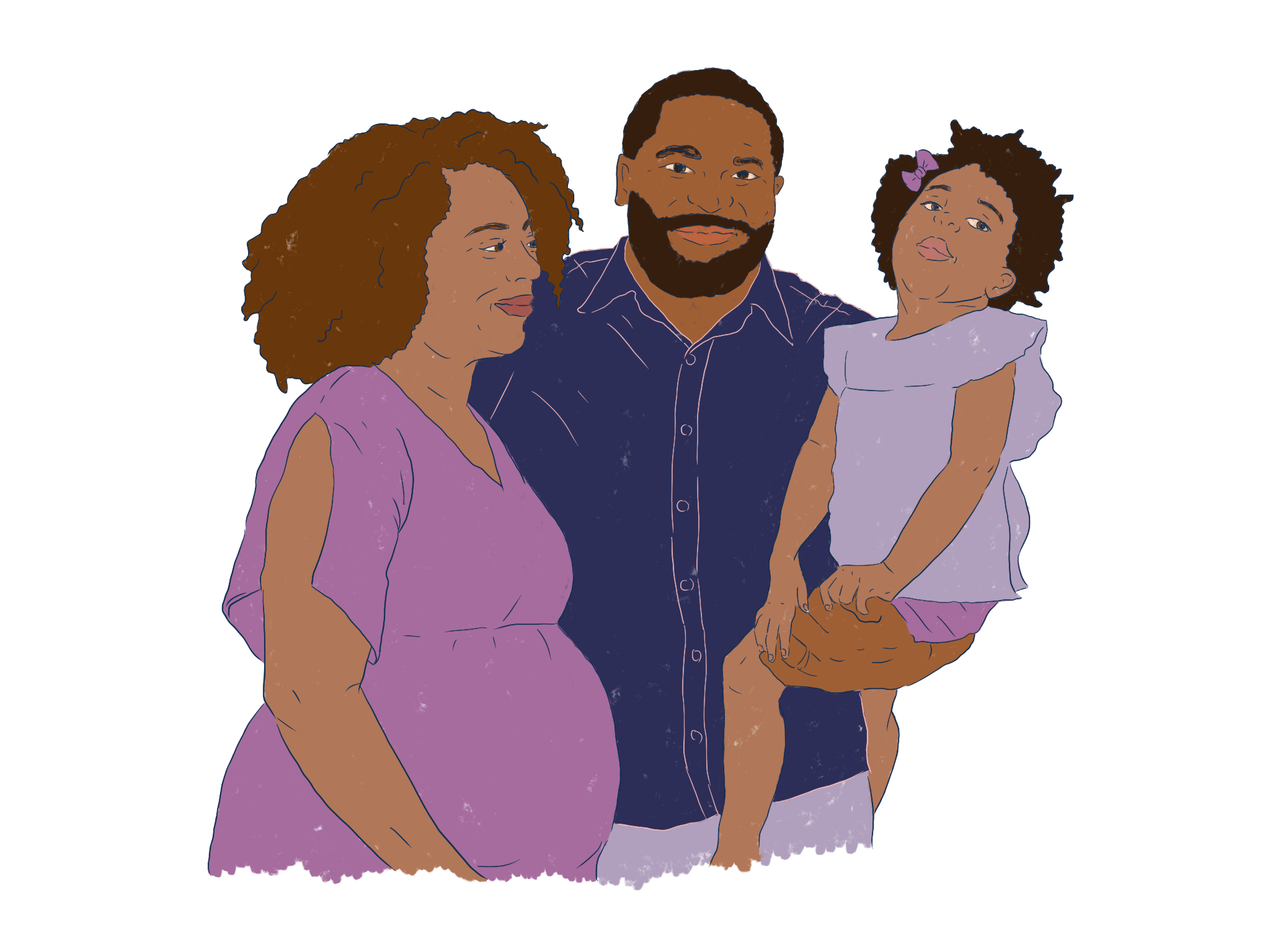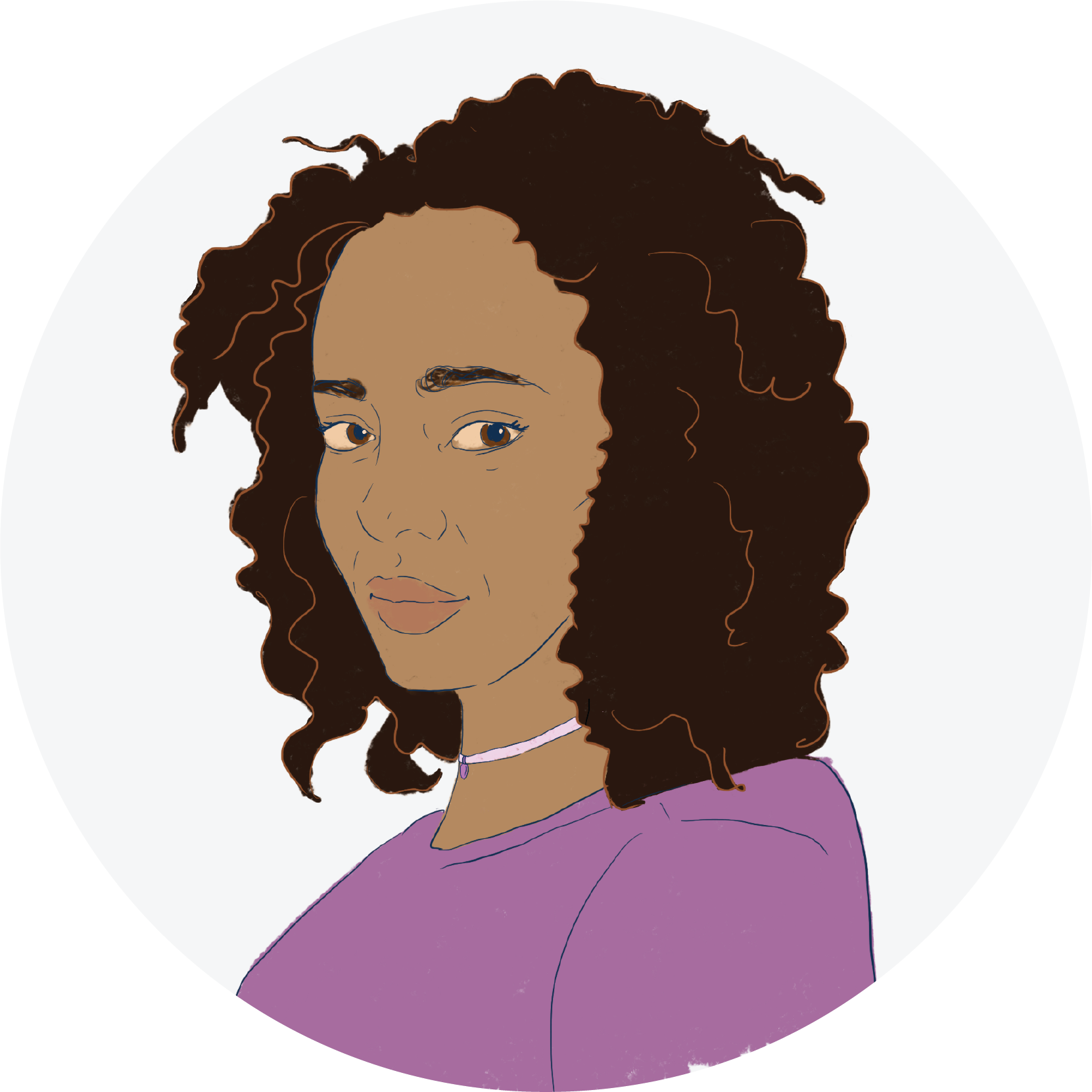I wish I had [support] when I was pregnant, in order to understand what all the programs mean. I still don’t know all the things that are available to me.
Where we are
For parents of all income levels, carrying and delivering a child is one of the most significant experiences of their life — but the stresses and burdens are greater for low-income families.
Many eligible low-income families are not enrolled in the combination of supports that exist to help them thrive after a baby is born. Too often, the difficulty of knowing what programs exist and navigating siloed, complicated application processes results in critical benefits (such as health care, food, affordable childcare, and early childhood programs) not reaching the families who need them most.

1 Source: Centers for Disease Control and Prevention

Our approach
To start, we listened to people’s stories.
The Life Experience research team spoke with people nationwide about this moment in their lives and where the government process could have been simpler and more helpful. The listening sessions captured honest conversations about peoples' experiences, candid feedback on what could have worked better, and what really made a difference for them. Their stories have been combined and are represented here through illustrations. The quotes are real, but names have been changed.












This research took place virtually and in-person, in English and in Spanish. 121 people, from 10 states, participated in the research. This group included single parents, people facing housing insecurity and homelessness, people who are justice-involved, and people with disabilities.
The team spoke with:
- 32 members of the public
- 12 frontline staff
- 13 state/program administrators
- 64 subject-matter experts
Discovery insights
Framing for collective thinking about customer pain points
How might we factor in the physical goods that families need in the first year after childbirth to help people start their journey with essentials in hand?
How might we empower organizations and staff in local communities to help families have greater awareness and streamlined access to available benefits?
How might we help people have the right information at the right time about enrolling in benefits and the process to renew them as needed?
Design Phase
Designing customer-centered solutions
Design phase pilot projects aim to build on discovery phase insights on priority customer pain points to tackle. Teams will develop and prototype solutions to measure what works. The design phase work will remain rooted in a human-centered approach, including customers in co-design and testing. The design phase will run through Fiscal Year 2023.
The Benefits Bundle aims to connect families welcoming a new baby to a bundle of supportive services through personal case management that is convenient, customized for language, and appropriately tailored to specific communities.
Project objectives
The Benefits Bundle will strengthen relationships across support systems to deepen health equity efforts in communities and ensure families are aware of and able to use services available at the Federal, State, local, Tribal, or territorial levels.
Target milestones in 2023 include:
- Readiness: Co-design and pilot the Benefits Bundle intervention in communities through approximately five pilots with HHS Healthy Start grantees to learn how to implement the intervention in a scalable manner.
- Momentum: Demonstrate the Benefits Bundle proof of concept and build the foundation for impact evaluations to be conducted.
- Capacity-Building: Disseminate best practices and lessons learned among Healthy Start grantees or others interested in creating a Benefits Bundle in their communities.
- Support: Build a model for future Federal approaches to Benefits Bundle supports.
Primary deliverables in 2023 include:
- Benefits Bundle Playbook that outlines successful case studies for implementation of the pilot and describes how a community can launch its own Benefits Bundle
- Technical assistance and training for Healthy Start grantees
Measures of success
Key outcomes
By connecting families via personal case management with a Benefits Bundle of core public benefits programs and reducing barriers to accessing those programs and benefits:
- Families will have greater awareness of and easier access to public benefits (increasing multi-program enrollment for those who are eligible)
- Enrollment gaps in core birth to early childhood programs will shrink
- Maternal and caregiver stress will measurably reduce
Design phase project measures
- Deploy the Benefits Bundles in a small number of Healthy Start sites in States, Tribes, and/or territories
- Increase enrollment of eligible families in birth to early childhood programs
- Improve experience measures such as trust and satisfaction compared to the baseline
The Newborn Supply Kit is envisioned to be a one-time, universal service delivered in collaboration with hospitals and community organizations that provides families with basic physical supplies and health products for baby and mom, crucial to the first few weeks after delivery. Newborn Supply Kits will also include resources about Federal programs and benefits, key developmental milestones, and other helpful information to build trust and form a foundation of relationships for further service connections. The Newborn Supply Kit is being implemented through a public-private partnership between the U.S. Department of Health and Human Services and Baby2Baby, a 501(c)(3) non-profit organization that provides children with diapers, clothing, and all the basic necessities that every child deserves.
Project objectives
The project will allow some new families in pilot jurisdictions to receive a Newborn Supply Kit. The Kit, modeled on successful programs in other countries, seeks to reduce the time, stress, and burden on new parents to obtain immediately-needed supplies and increase knowledge about government services and community resources for new families. Equitable distribution of the Kits can help reduce the stigma associated with seeking government services and reduce disparities in communities that are typically underserved.
Target milestones in 2023 include:
- Announce pilot partners and jurisdictions
- Launch the Newborn Supply Kit pilots in a limited number of jurisdictions
- Conduct an implementation evaluation
Primary deliverables in 2023 include:
- Newborn Supply Kit prototype
- 1-2 pilots involving collaboration with non-governmental organizations and counties
- Case studies on the design and implementation of Newborn Supply Kits, including consideration of best practices for collaboration
Measures of success
Key outcomes
By providing families with a Kit, the project aims to:
- Reduce financial and parental stress on mothers and caregivers in the immediate postpartum period
- Increase awareness and thereby timelier enrollment of eligible families in critical support programs
- Increase trust in Federal benefits programs
Design phase project measures
- Distribute an initial number of Kits in a limited number of pilot jurisdictions
- Demonstrate a high level of satisfaction among participants concerning timing, method, and contents of the Kit provided
- Improve experience measures (e.g., financial stress) among participants relative to comparable non-participants
The project will pilot a Federal notification service that will enable Federal benefits programs to use text messages (SMS) to send reminders and guidance to subscribers at crucial points throughout the benefits enrollment and renewal process.
Project objectives
The notification service pilot aims to improve the customer experience for families through better communication, reduce administrative burdens, and increase eligible families’ access to benefits.
Target milestones in 2023 include:
- Evaluate and develop agencies’ authorities to operate the notification service
- Partner with up to three benefits programs to send the first pilot messages via the notification service
- Assess the success of the pilots
- Expand product features to help scale the impact of the notification service
Primary deliverables in 2023 include:
- Pilot the design and launch the service
- Pilot metrics to evaluate the service
- Develop a synthesis of lessons learned during pilot
Measures of success
Key outcomes:
A successful notification service will streamline information about available resources and reduce the administrative burden on families navigating benefits programs. Outcome measures will include families’ responses to the pilot notification (such as if they choose to receive messages and engage with them), whether program participation increases, and whether program churn decreases.
Design phase project measures:
- Percentage of families who opt to receive text messages
- Increase in programs utilizing SMS for the first time or a new use case
- Increase in follow-through and completion of benefit applications (and/or renewals) or other prompted actions, such as scheduling doctor’s appointments, relative to those not receiving notifications
- Decrease in administrative burden compared to those without the notification service
- Improve experience measures such as trust and satisfaction with services in pilot populations compared to those not utilizing the service
- Decrease administrative costs for the government (reducing “churn” and re-applications)
Project Documentation
- Project Charter
- Project One-Sheet
- Design Project Summaries
- Customer Journey Map & Stories
- Information collection approved under OMB Control #3206-0276
- Life Experience Initiative Summary
- Executive Order 14058
- President’s Management Agenda
Agency collaborators
- General Services Administration (GSA)
- Department of Labor (DOL)
- Department of Housing and Urban Development (HUD)
- Department of Agriculture (USDA)
- Office of Management and Budget (OMB)
- Department of Education (ED)
- Department of Health & Human Services (HHS)
